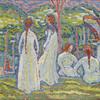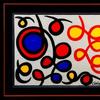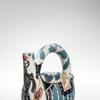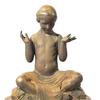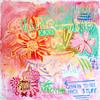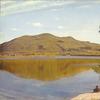Masterworks Loaned for Chrysler Museum's Exhibition 'The Agrarian Ideal: Monet, van Gogh, Homer, and More'
- NORFOLK, Virginia
- /
- September 07, 2016
Virginians and visitors can spend a day in the country with one of the world’s greatest Impressionist paintings.
This fall, the Chrysler Museum of Art in Norfolk, Virginia, celebrates the 19th-century fascination with rural labor and countryside landscapes in a new exhibition that presents Claude Monet’s Haystacks, Late Summer, 1891, on loan from the renowned Musée d’Orsay in Paris, the world’s premier museum of Impressionist art. It will be on view alongside 21 Chrysler Collection treasures by Winslow Homer, Paul Gauguin, and Camille Pissarro, and others. The works include paintings on agricultural themes, sculptures, detailed drawings, early photographs and Impressionist masterworks known for their evocation of light. Enriching this exhibition is Vincent Van Gogh’s dramatic Wheat Field behind St. Paul’s Hospital, St. Remy, 1889, a generous loan from the Virginia Museum of Fine Arts in Richmond.
The Agrarian Ideal: Monet, van Gogh, Homer, and More opens to the public in the Chrysler’s skylit Hixon Family Impressionist Gallery (G. 217) on October 7, 2016 and remains on view through January 8, 2017. Admission is free.
“We are thrilled to partner with the Musee d’Orsay to bring this Impressionist masterpiece to the Chrysler,” says Lloyd DeWitt, Chief Curator and Irene Leache Curator of European Art. “It is a perfect complement to our own collection masterworks, as is the VMFA’s van Gogh.”
“The Chrysler frequently lends important artworks to leading museums around the world,” says Museum Director Erik Neil. “Because of the relationships we have built, we are also able to borrow world-famous paintings like the Van Gogh from Richmond and the Monet from Paris.”
While the Impressionists are famous for scenes of Paris, in the 1890s many of them departed the city for the country. As Paris had become dangerous, crowded, industrial, and expensive, many of the city’s best artists left to seek simpler subjects and an integrated life untouched by the ills of modernity.
Claude Monet relished living in Giverny, 45 miles northwest of Paris. There, he captured the effects of changing light and weather on huge stacks in the fields near his home. Farmers in this part of France regularly stored the year’s crop of wheat in stacks that they left in the field, as they had for centuries. Between July 1890 through the following spring and summer, the artist completed more than 30 paintings featuring the subject. “Creating a shimmering surface with strokes of pure paint, Monet sought to capture the instant effects of light at their most evocative,” DeWitt says of Musée d’Orsay’s acclaimed canvas from late summer 1891.
Vincent van Gogh also headed to the country for solace. His Wheat Field (from the collection of the Virginia Museum of Fine Arts) shows the view he painted many times from his window in the psychiatric hospital in St. Rémy. DeWitt says, “With its dramatic sky, it embodies the visionary approach he developed towards the end of his life.”
On this side of the Atlantic, Winslow Homer and a number of American artists also sought out country life in the wake of the Civil War, echoing Thomas Jefferson, who wrote in Notes on Virginia: “Those who labor in the earth are the chosen people of God, if ever he had a chosen people, whose breasts he has made his peculiar deposit for substantial and genuine virtue.”
The Agrarian Ideal: Monet, van Gogh, Homer, and More will be on view at the Chrysler Museum of Art, One Memorial Place, Norfolk, Va., from October 7, 2016 through January 8, 2017. Admission is free. For programs related to the exhibition, see chrysler.org.



